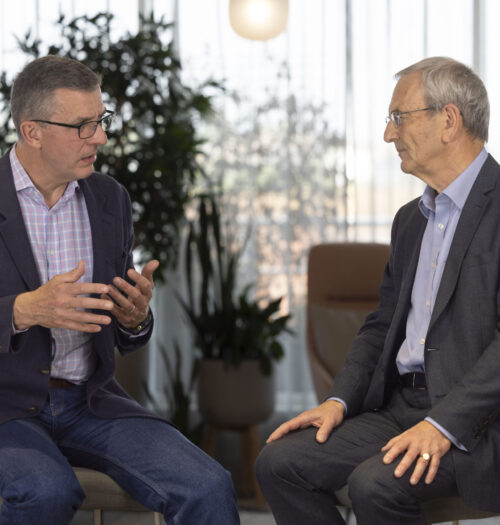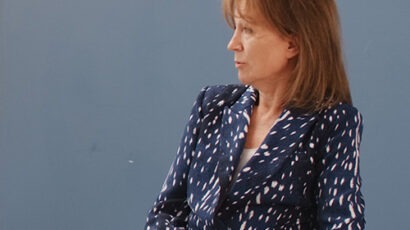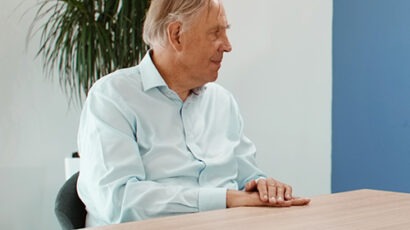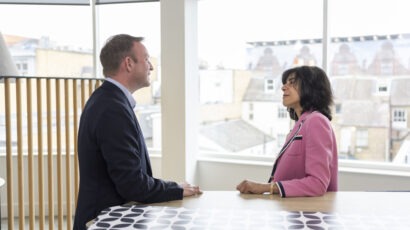
Leadership is vital to a successful sustainable transition
The D&G Group completed 2.7m appliance repairs during the year ended March 2025 (2.6m in 2024) and maintained a claims approval rate of 99%. In May 2025, the Group also saw its Scope 1, 2 and 3 emissions reduction targets validated by the Science Based Targets initiative (SBTi), underlining its commitment to sustainable growth.
D&G’s sustainability strategy focuses on helping to limit climate change, championing a more circular economy, and caring for its people and communities. All three areas are underpinned by its commitment to being a responsible and sustainable business. This commitment is integrated into strategy and is a reason why its financial performance and approval rating are so strong – they do not run counter to their sustainability credentials; they are integrated.
The role of the board
David Tyler, D&G Chair, points out the role of the board in the company’s commitment to decarbonisation: “Of course, we've got a responsibility to our shareholders, but in addition, we've got a societal responsibility, and a responsibility to future generations. So, putting it onto a personal basis, very often, I sit here at a board meeting, metaphorically with a grandchild sitting on my shoulder, thinking about what he will say to me in 10 years’ time.”
He continues: “The world is hotter than ever. We have a responsibility, not just to our generation, but to future generations in business and, of course, as individual citizens too.”
Tyler emphasises that the board's role is vital. “Firstly, we must monitor our data. Are we delivering a reduction in carbon? Are we going to reach our objective under SBTi to get our global greenhouse emissions down by 42% over six years to 2030? But there's an even more important objective…the long-term resilience of this business,” says Tyler.
For Matthew Crummack, D&G’s CEO, this means combining a sustainable business model, which generates good commercial outcomes, with outcomes that are also good for the environment and the wider community. “When we talk to our board members, it’s about being able to generate sustainable commercial outcomes with partners and with customers which stand the test of time. We've been doing this job for many decades, but we've been growing the top and bottom line for about 25 years and combining that with good sustainable outcomes. I think that's what sustainability is about.”
Crummack says that his role as CEO is able being an enabler and un-blocker; and he adds that given sustainability is core to what D&G does, he needs to keep the team focused on this long-term horizon and continue to build a sustainable model. “As a business leader, I've come to appreciate that we have a role to play in the issues that are important to society. Sometimes we need to role-model what's required and create the change that we want to see. And I take that responsibility quite seriously,” he says.
A repair first approach
‘Repair first’ is core to D&G’s business model. It underpins the service offered to customers, reduces costs for the customer and delivers environmental benefits of a ‘repair rather than replace’ attitude. But it also means that fewer appliances are being made, and fewer trucks are creating emissions when delivering them. D&G’s data show that the average emissions generated by a repair is less than 5% of those generated by a replacement.
“We try to get as much information as we can from the customer into the system. We're dealing with hundreds of different brands, thousands of different makes and tens of thousands of different SKU numbers. But the more information we get, the better our systems are, the better organised we are, the better prepared the technician is,” says Crummack. “We feed a lot of information back to the manufacturer, which helps them create more resilient long-term machines next time around. So, there's a benefit there too,” adds Tyler.
Crummack points out: “The conversations that we have now are being driven by much better data as a result of our own systems, the data lakes, the analytical tools and, increasingly, the AI that sits on top of all that which allows us to get better insights.”
He continues: “These relationships with manufacturers have to have value-creation at the core. Sustainable value creation is what drives great partnerships over decades, not just a few quarters,” says Crummack. “We often think sustainability is about being about the environment, but at D&G sustainability also means sustainability of the business, the business model and the relationships behind that.”
Tyler emphasises that the board is very happy about this. “The ‘Smart Fix’ product is really having an impact now,” he adds.
Providing leadership across the industry
Through data, D&G is helping to lead the industry to a more sustainable future that also benefits D&G itself. And by working across manufacturers, D&G is helping manufacturers hit their own sustainability targets and meet a growing customer demand for more sustainable products.
Crummack says: “To be relevant in our industry, it is not just about selling protection as a revenue stream to our partners; it's about being a relevant partner. We need to provide insight, we need to provide data, and that insight and data is relevant for the C suite of those of those organisations, because that insight and data drives activity.”
He continues: “Providing data and insights – whether it's on a SKU level, or how we get more efficient as partners, how we do better jobs for customers, how we drive better business results or how we drive better environmental outcomes – gets access to the C suite, because they are not only about a great story, but they deliver a better business outcome. Those are the types of conversations that we have more of now, and they are based on the data.”



